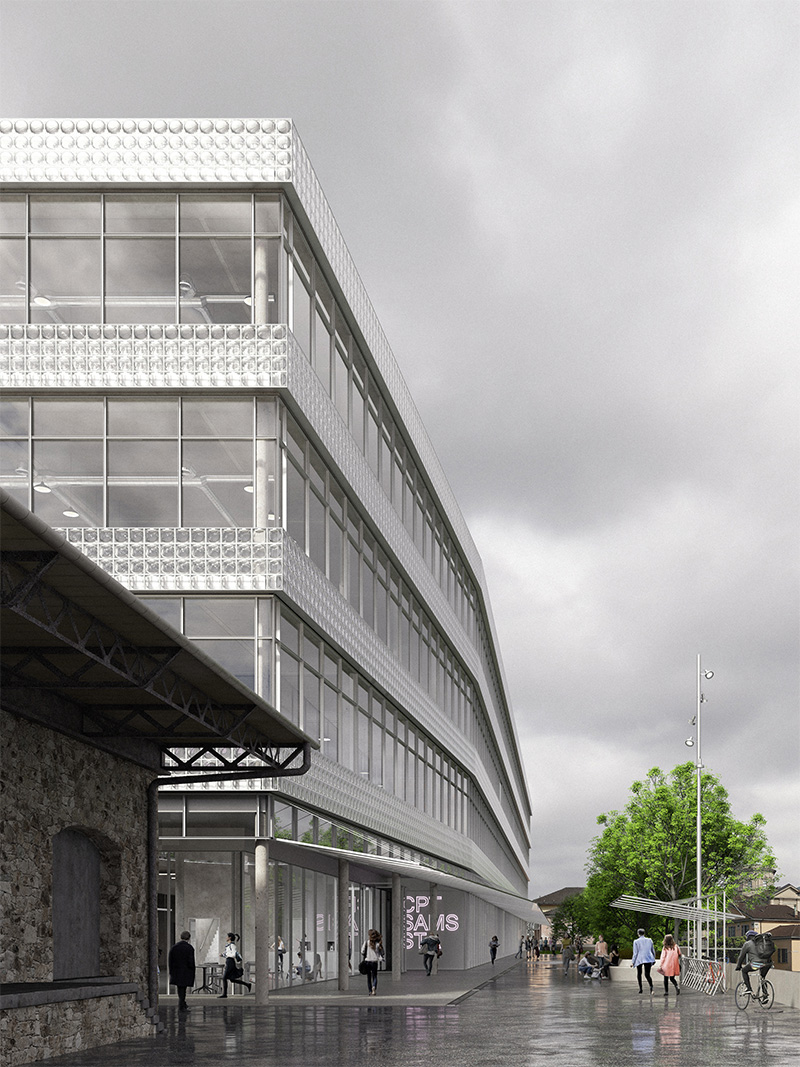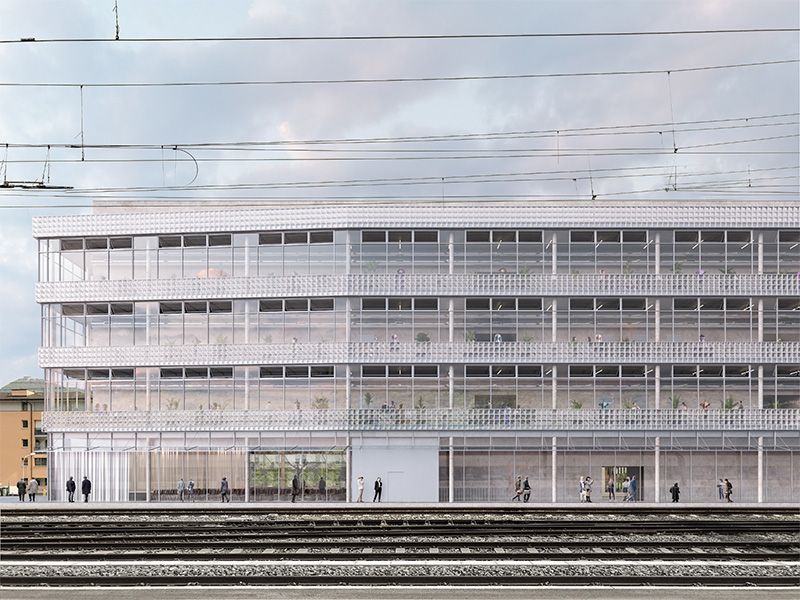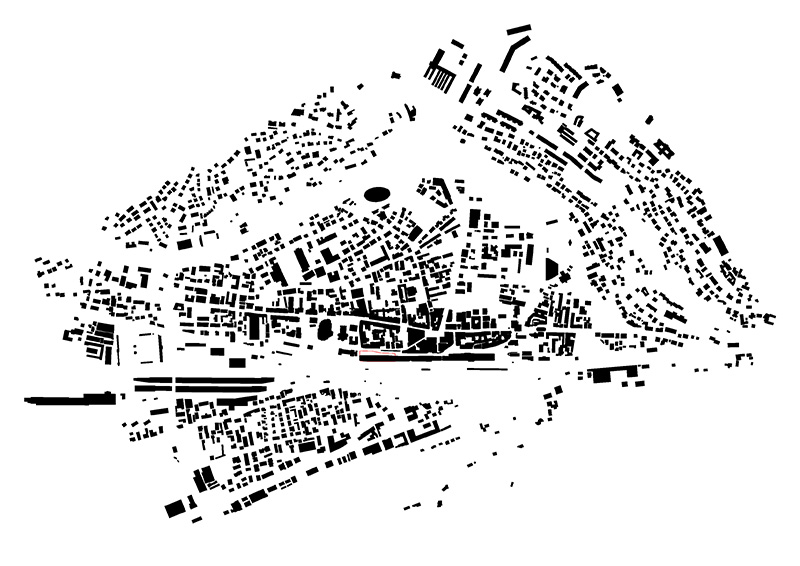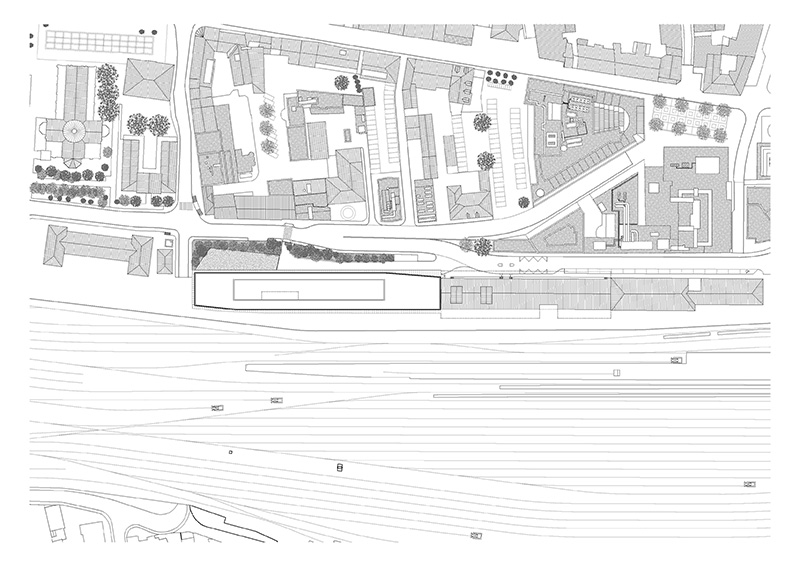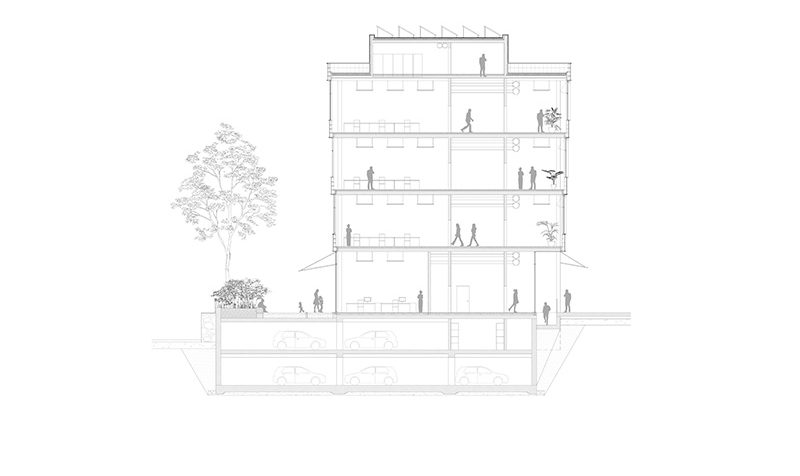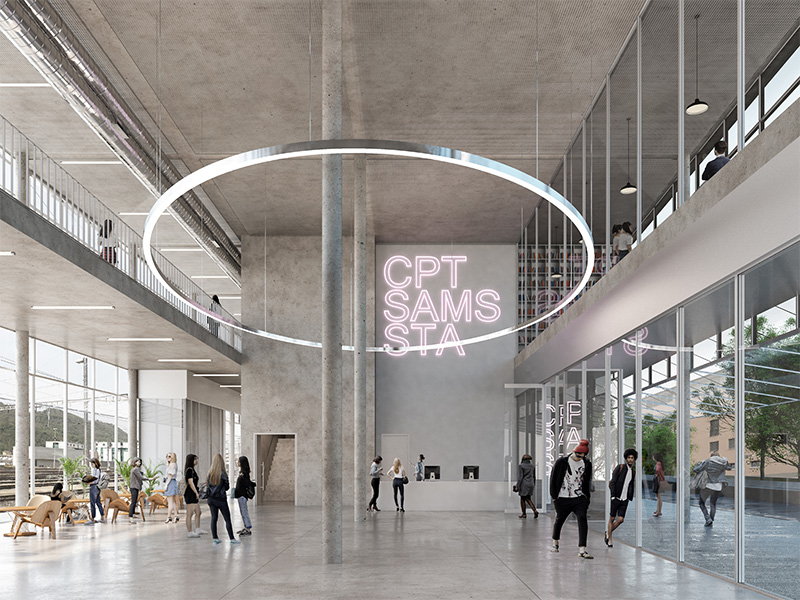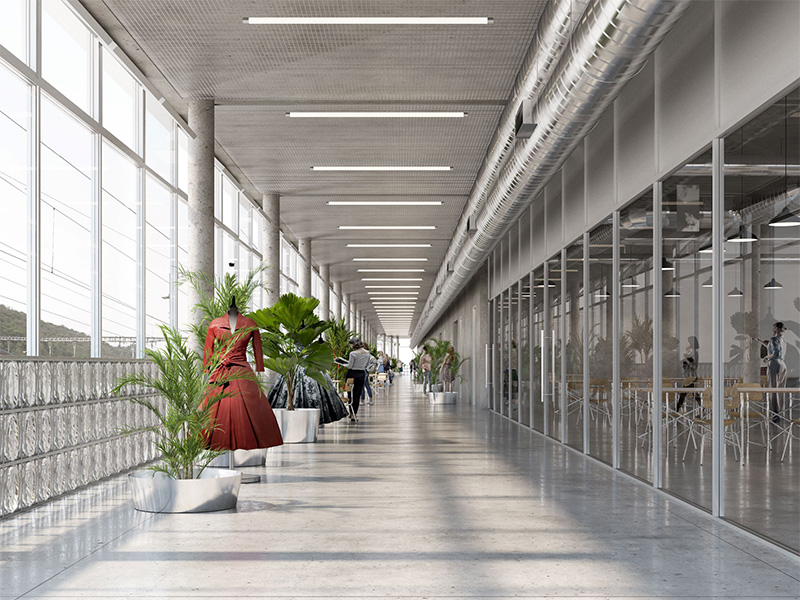The Fashion School in Chiasso, appears like a glazed prism, a light and transparent kaleidoscope, able to create plays of light and shadows that vary during the day. Horizontal bands mark the volume’s partition, highlighting the different floors of the complex, and enabling a clear and swift readability.
Each floor is also divided into two ribbons: a semi-opaque one composed of glass blocks, and a transparent windowed ribbon occupying the higher part.
The side of the lot facing south west overlooks a large empty space, characterized by the absence of buildings and dominated by the presence of the railway, connecting Switzerland to Italy.
The presence of this infrastructure has dictated the alignment of all buildings adjacent to the site, which are based on a typology characterized by a narrow and elongated structure.
The new volume conforms to the existing shapes, resuming the positions and alignments, obtaining a generous front area, which offers the possibility of creating a high-quality public space.
The distributive principle on which the organisation of the spaces is based arises from the interpretation of the context and its own environmental characteristics.
The structural, distributive and climatic criteria of the building find their perfect crystallization in the location of a supporting structural spine, containing services, vertical connections and support spaces, creating two separate sectors within it, in the heart of the structure.
The spaces designated for teaching are placed along the north side, which enables them to benefit from constant and indirect light during the day, and offers a view towards the center of Chiasso.
To the south, the side that is more exposed to direct solar radiation, a long corridor manages the horizontal connections.
This space, intended not only as a connecting device but also as a sharing space can become a support for educational activities, hosting various initiatives, from exhibitions of the students’ creations to the possibility of carrying out fashion shows and other small events.
All teaching rooms are designed to ensure the highest degree of flexibility and adaptability to future needs. The conformation of the spaces dedicated to laboratories can be changed throughout the day, by removing internal partitions it’s easy to create a continuous work environment.
The choice of interior finishes favours materials that are neutral and raw, turning the building into a blank canvas capable of absorbing the different activities of the program.
Given the peculiarity of the school’s location, characterized by the creation of textile products, the choice of materials aims at creating a background for the students’ creation without the impression of competing with them, so creating a dynamic and ever-changing environment.

